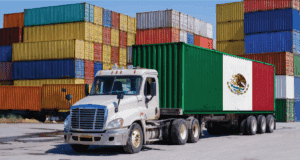Increasingly relying on international markets to expand customer base, supply chain resiliency, and profitability often requires a global collaboration. As a logistics provider, it may not serve manufacturers best by trying to wear all hats in supply chain management. We all have our strengths in business operations that lend themselves to partnership opportunities.
Logistics alliances can be an impactful solution, enabling the logistics team to provide a full breadth of services while allowing each partner to focus on their strengths. Alliances are strategic partnerships rooted in collaboration between multiple logistics providers that work together to create optimized, tailored solutions that meet their customers’ needs and streamline their supply chains.
The Benefits of Logistics Alliances
Have you considered the logistics alliance option? While there are numerous benefits to these partnerships, especially in an international market, here are some key advantages to consider:
- Improved Services: The collaboration of multiple partners allows a team to improve their service offerings, such as faster delivery times, increased reliability, better geographic coverage, and tailored solutions, as well as to expand the range of services they are able to offer through one point of contact.
- Enhanced Efficiency: Developing strategic alliances allows providers to pool their resources, share infrastructure, and provide access to advanced technologies, expertise, and best practices for greater efficiency that can streamline processes.
- Cost Reduction: Improved efficiency in all aspects of the supply chain allows for achieving economies of scale and reducing operational costs, particularly with warehousing and transportation expenses.
- Expanded Reach: In pooling resources, alliances allow businesses access to a more extensive network and broader reach for an expanded global footprint and the ability to penetrate new markets with more in-depth knowledge of local regulations.
- Risk Mitigation: Collaborating allows companies to share the risks associated with logistics operations, while also providing a built-in contingency plan for customers better able to overcome unplanned disruptions, such as weather conditions, natural disasters, port closures, or political unrest.
- Knowledge Sharing: Partners can share insights, experiences, and best practices, fostering an environment of innovation that can lead to improved strategies, cutting-edge solutions, problem-solving, and business growth.
Overall, strategic alliances in logistics can lead to a more robust, efficient, and responsive supply chain, ultimately benefiting all partners and stakeholders involved. Successful partnerships, however, have to bring value to the customers they serve and provide value to each partner. Let’s explore some of the critical components that make a partnership successful.
What Makes Alliances Successful
- Complementary Strengths: Successful alliances leverage the unique strengths and capabilities of each partner, whether it’s services, geographic reach, technology, or expertise, to better serve customers and enhance overall performance.
- Clear Objectives: Establishing well-defined goals and objectives from the start ensures all partners are aligned and working together towards expected outcomes or long-term business strategies with a unified approach.
- Trust and Communication: Building trust among partners is crucial as open communication and transparency foster a collaborative environment, reducing the likelihood of any conflicts. Regular and clear communication helps keep all parties informed, facilitates problem-solving, and ensures everyone is aligned.
- Leadership and Adaptability: Effective leadership is essential to make strategic decisions, motivate team members, and guide the alliance, particularly if changes are needed within the partnership to adapt to market dynamics and unforeseen challenges.
- Shared Risks and Conflict Resolution: Clearly defining how risks and rewards will be shared helps align interests and encourages commitment from all partners, while also having predefined processes for resolving conflicts to help address issues quickly and maintain a positive partnership.
- Performance Metrics: Establishing key performance indicators (KPIs) to measure success helps partners track progress, identify successes or areas for improvement, and make any necessary adjustments to enhance the partnership.
By fostering collaboration, leveraging technology, and optimizing resources, these partner alliances enable logistics teams to successfully navigate the complexities of global supply chains. Through these components, companies can build and maintain successful logistics alliances that drive mutual benefits and long-term success for their partners and customers, ultimately creating efficiency, resilience, and growth in the supply chain landscape.
ProTrans is actively building logistics partner alliances to enhance partner capabilities and better serve customers’ needs, whether it be our customers or yours. If you are interested in exploring a partner alliance relationship, reach out to Patrick Parker, Director of Business Development – Alliances, at parkerp@protrans.com.


